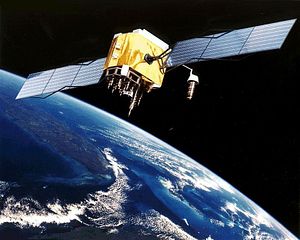China has conducted a flight test of a new anti-satellite missile, the The Washington Free Beacon reports. The test of a so-called Dong Neng-3 missile occurred on October 30 at the Korla Missile Test Complex in western China. Details surrounding the launch of the missile remain murky and it is unknown whether the test was successful.
According to the Hong Kong-based newspaper Ming Pao the “final-phase missile interception test had been conducted in the upper atmosphere.” However, in the past, China has repeatedly tried to disguise anti-satellite tests as missile defense interceptor tests. Since 2005, China has conducted eight anti-satellite tests. Tests conducted in 2010, 2013, and 2014 were labelled “land-based missile interception tests.”
China’s burgeoning anti-satellite capabilities first got public attention in 2007 when it destroyed a defunct weather satellite with a missile. A ballistic missile (DN-2) tested in 2013 almost reached geosynchronous orbit ascending to around 30,000 kilometers (18,600 miles) above earth.
U.S. defense officials familiar with the DN-3 told The Washington Free Beacon that it is “primarily a direct-ascent missile designed to ram into satellites and destroy them, even if intelligence assessments hold that the weapon has some missile defense capabilities.”
Additional unclassified details on the DN-3 are scarce. It could either be a modified version of the DN-2, a high-earth orbit interceptor produced by China Aerospace Science and Industry Corporation, or a complete new missile.
The launch platform also remains unknown. “China recently developed two new and more powerful space launchers called the KZ-1 and KZ-11. A DN-3 weapon based on the KZ-11 launcher would be capable of hitting targets at higher orbits,” Bill Gertz states.
In March, the Pentagon’s chief weapons buyer, Under Secretary of Defense for Acquisition, Technology and Logistics Frank Kendall, said at a conference that the erosion of the U.S. technological edge in the space domain is “particularly bad” due to Chinese and Russian growing anti-satellite capabilities.
As I reported before (See: “Is the Pentagon Losing the Arms Race in Space?”), U.S. officials are especially concerned about threats to U.S. Advanced Extremely High Frequency (AEHF) satellites.
However, as contributor to The Diplomat Jaganath Sankaran emphasized in 2014,”[T]he benefits from an ASAT [anti-satellite] attack are limited and would not confer decisive military advantage in every plausible conflict.”
“The substantial range of orbital altitude — 1,000 kilometers to 36,000 kilometers — from which satellites operate poses a challenge to China’s ability to attack U.S. military satellites (…) Unlike the U.S., China has a very limited satellite tracking capability, most of which are based in its territory and possibly a few ships,” he explains.
According to a forthcoming report by the congressional U.S.-China Economic and Security Review Commission, both the DN-2 and Sc-19 (the DN-3 might be mid-course adjustable) can only be launched on pre-determined flight paths and only hit a satellite when it passes over Chinese territory.
































